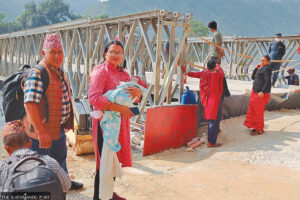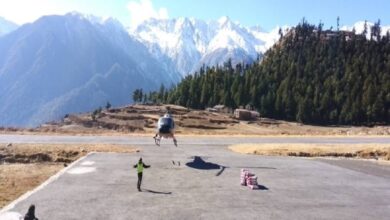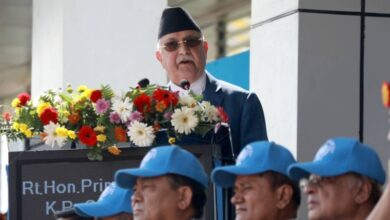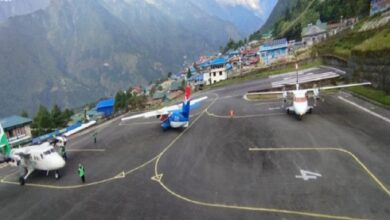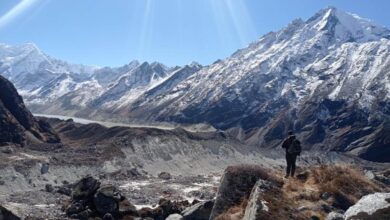Flood-destroyed Khurkot Bailey bridge restored, bringing relief to cut-off communities
Sobha Thapa was eagerly waiting to cross the Sunkoshi river on Ramechhap side in Khurkot. She was carrying her baby in lap. She had to go to her home in Sindhulimadhi, the district headquarters of Sindhuli, from her maternal home at Betini of Manthali Municipality in Ramechhap. Thapa expected that the authorities would allow crossing the river through the Bailey bridge installed by the Nepal Army (NA).
The massive floods in the Sunkoshi river triggered by heavy rains on September 28 swept away a motorable bridge in Khurkot cutting off Ramechhap, Dolakha, Okhaldhunga and Solukhumbu districts with the Tarai.
The army completed the installation of the Bailey bridge in Khurkot on Monday. Though vehicular movement has yet to resume through the bridge, the army allowed pedestrians to cross the bridge from Monday afternoon.
“I somehow came to my parental home to receive Tika during Dashain by taking a longer route. Now that the Bailey bridge has been installed in Khurkot, I could easily cross the river using the shortest route,” said elated Thapa. “Many people like me have benefited from the operation of the bridge, even if it is only for pedestrians for the time being.”
Considering the importance of the Khurkot bridge, the federal government entrusted the responsibility to set up the Bailey bridge to the army. The army completed the bridge installation work within two weeks of the project’s commencement.
“We will test the load-bearing capacity of the Bailey bridge within a couple of days, and after that vehicular movement will resume,” said Lieutenant Colonel Narayan Tumbahamphe, the field commander of the NA team deployed to the project. It is a single-lane bridge.
According to him, the NA team planned to set up the Bailey bridge in a week, but the installment work was extended by one more week as some additional bridge parts had to be brought from Lahan of Siraha.
Transportation for the people of Ramechhap, Sindhuli, Dolakha, Okhaldhunga and Solukhumbu became quite difficult during Dashain, a major Hindu festival, after the floods swept away the bridge. With the road closed, prices of essential commodities skyrocketed in the area during festival season, leaving the locals in hardship.
The 100-metre bridge had been constructed ten years ago to link Khurkot in ward 7 of Golanjor Rural Municipality in Sindhuli district with Betini in ward 6 of Manthali Municipality in Ramechhap district. But the September flooding had swept away a 51-metre section on the Ramechhap side.
The local people are elated with the installation of the Bailey bridge in Khurkot. “Our daily lives were crippled after the floods destroyed the bridge in Khurkot. We were cut off from Sindhuli and other districts. The reopening of the bridge has brought us great relief,” said Mithu Ram Thapa of Ramechhap. “Now that there is a bridge, the government should provide relief and rehabilitate the people who were displaced by the floods and landslides,” he demanded.
The rain-induced disasters wreaked havoc in several districts across the country in the last week of September. Mainly the Bagmati and Koshi provinces were the hardest hit by the floods and landslides. Kathmandu Valley, Kavrepalachok, Ramechhap, Sindhuli, Dolakha, and Dhading districts were hugely affected as the floods in several rivers and the landslides destroyed houses and public infrastructure including roads, offices, drinking water projects, and utility poles.
The government declared dozens of local units in 14 most affected districts as ‘disaster crisis zones’ with the objectives of expediting rehabilitation, recovery and reconstruction efforts. However, the relief and rehabilitation works have not been carried out effectively, leaving hundreds of displaced families in hardship.

